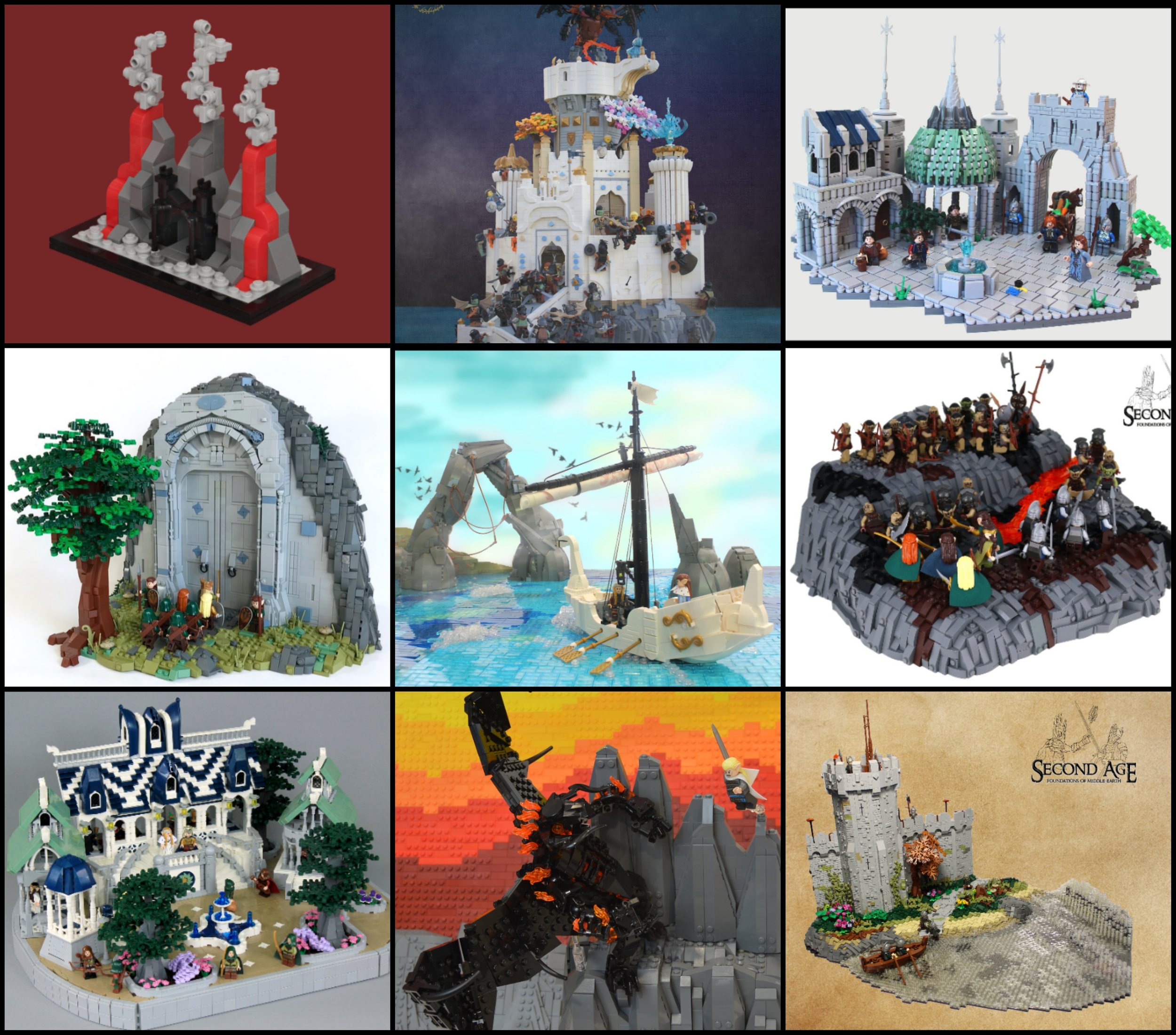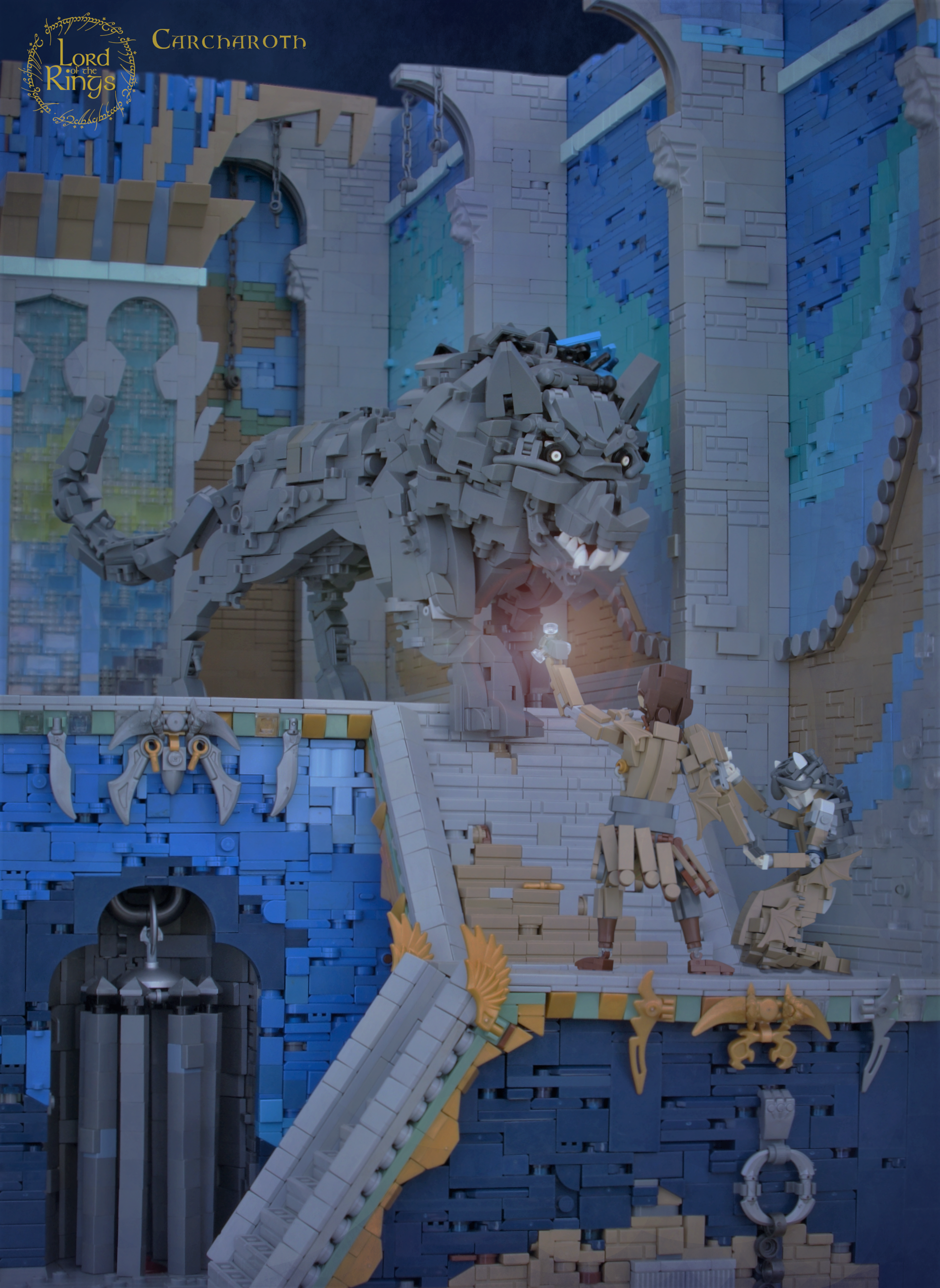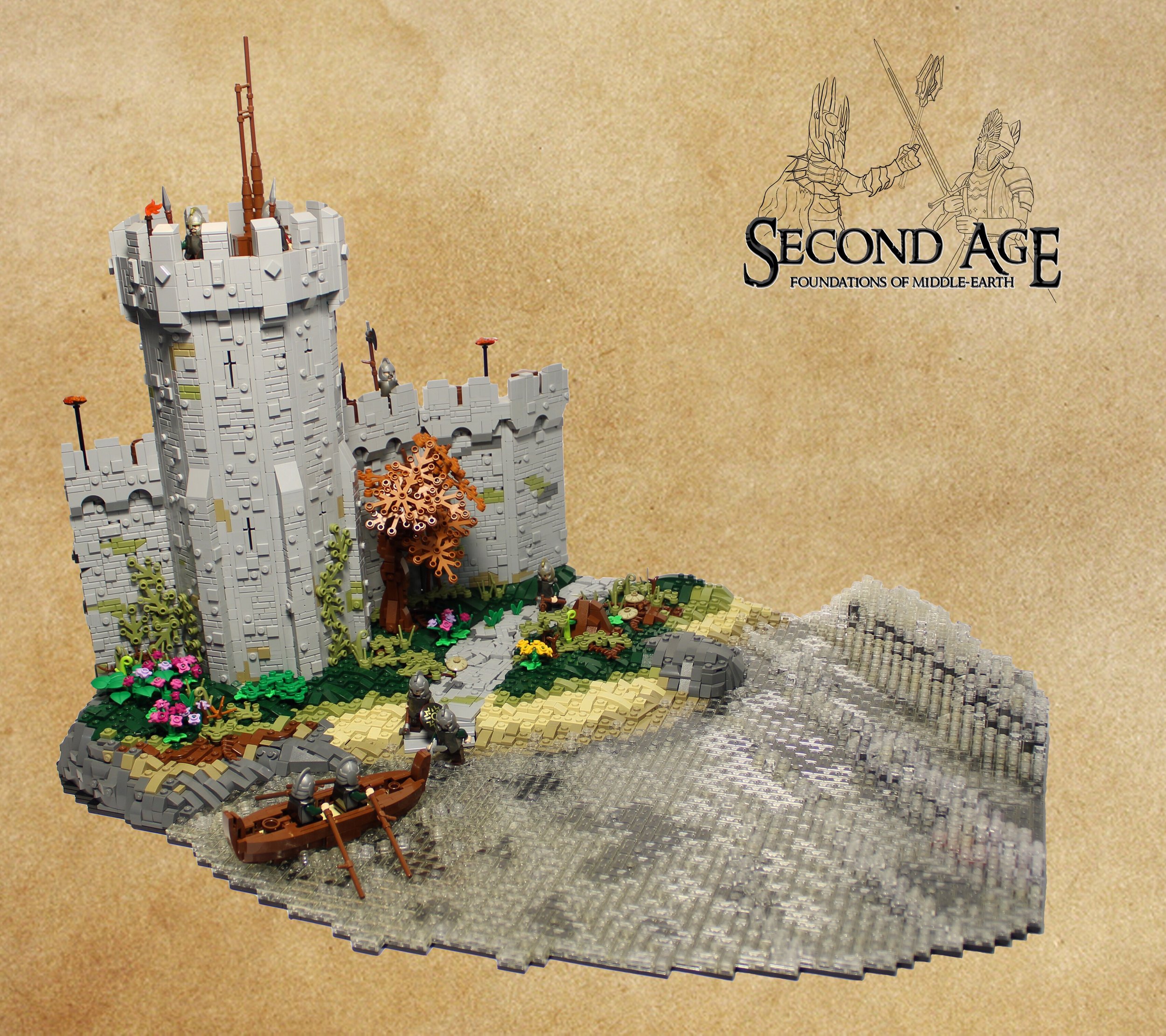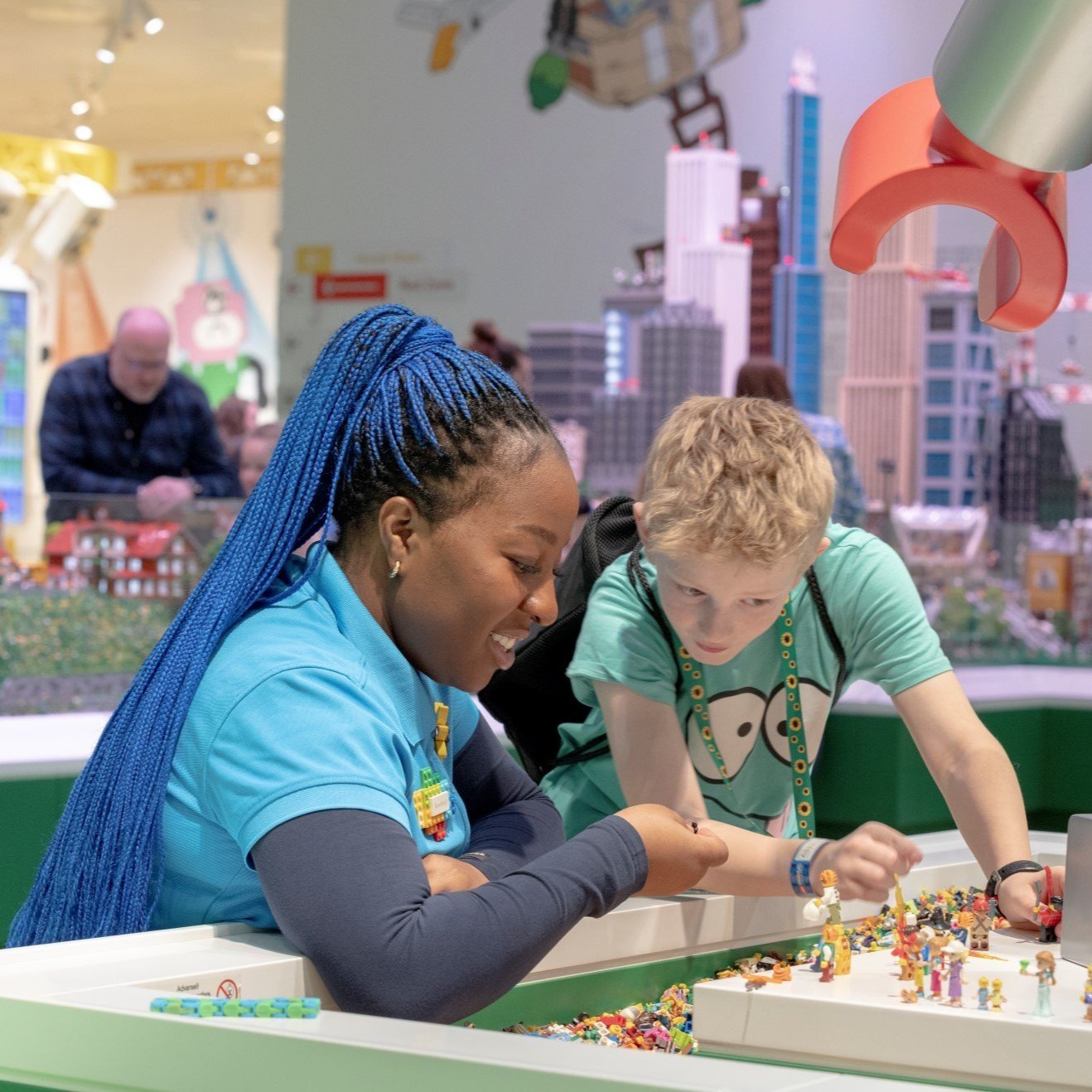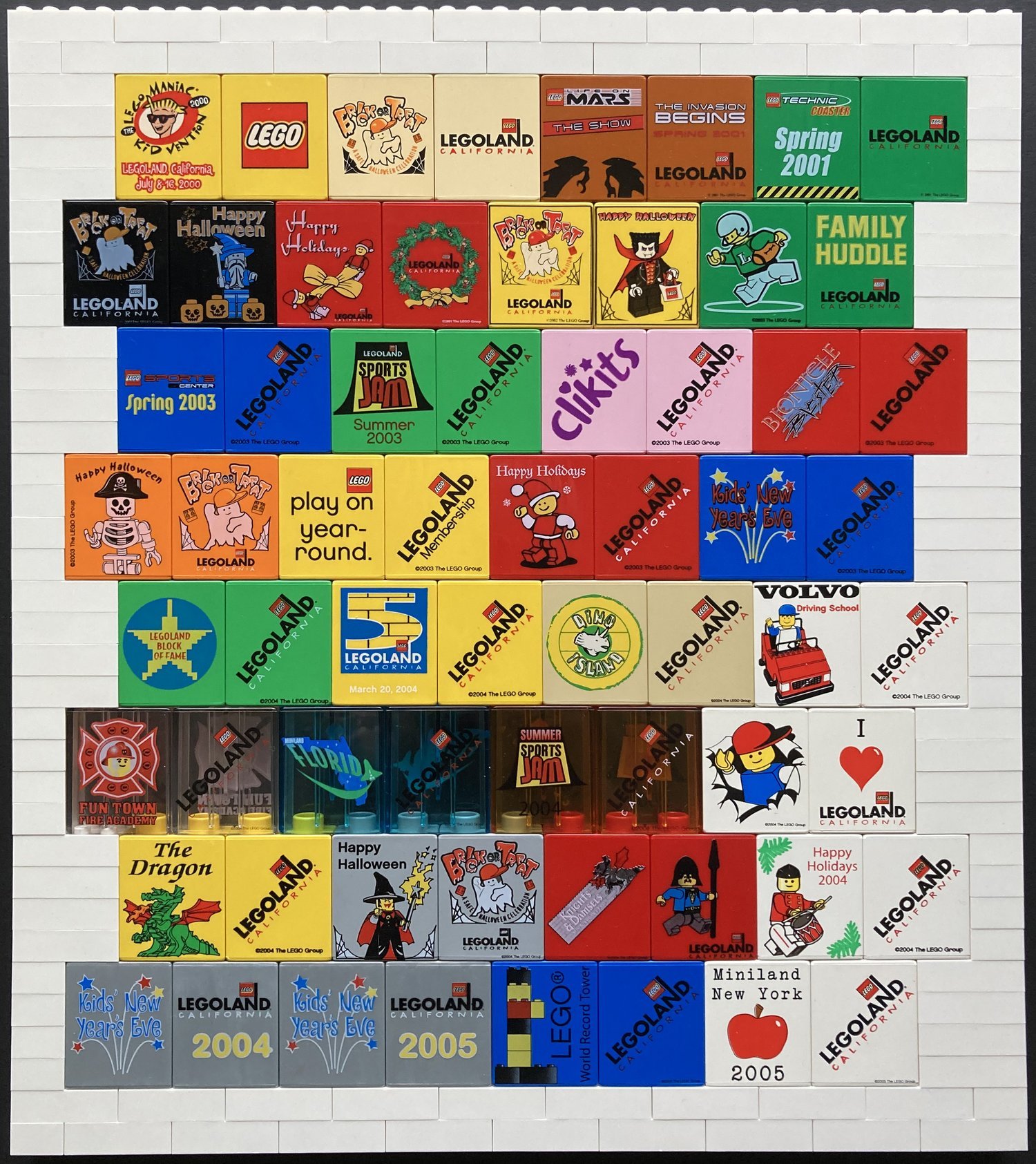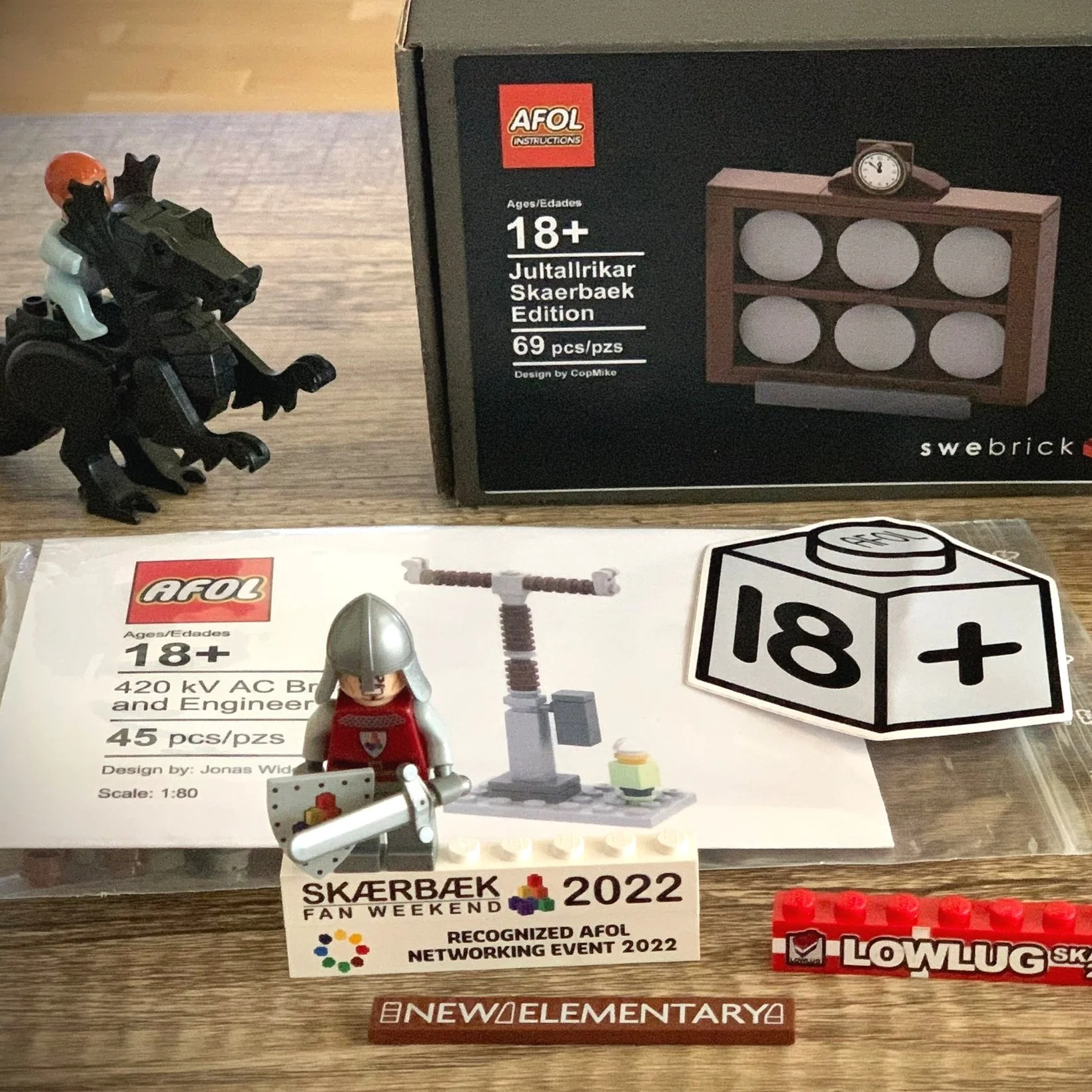The Silmarillion in LEGO
/The Lord of the Rings is an extremely popular series of books and films—and for good reason. The world of Middle Earth is incredibly detailed and immersive, and I would argue that no other fantasy book has managed to capture that same scale. However, what some casual fans may not realize is that The Hobbit and The Lord of the Rings aren’t Tolkien’s only works set in the world of Middle Earth. In fact, they’re preceded by thousands of years of history, much of which is recorded in The Silmarillion. The Lord of the Rings takes place in the Third Age of Middle Earth while The Silmarillion covers the events of the First and Second Age, fleshing out Middle Earth’s rich history.
As a huge Middle Earth fan, I love seeing MOCs based on all of Tolkien’s work, but there’s something extra nerdy about seeing builds based on The Silmarillion. These MOCs aren’t nearly as common as creations from The Hobbit and The Lord of the Rings, but they exist. In this article, we’ll take a look at these MOCs and use them as a template to take a journey through The Silmarillion and the history of Middle Earth leading up to the events of The Lord of the Rings.
Fair warning, there are plenty of spoilers for The Silmarillion in this article.
Preface
Alright, I’m about to throw a lot of exposition at you in these next couple of paragraphs, so don’t worry if it doesn’t all make sense—you don’t need to understand the entire history of Middle Earth to enjoy these epic creations!
Image via Wikipedia
The Silmarillion begins by recounting the creation of Arda (the world that Middle Earth is set in) by Illuvitar (basically God) and its settlement by the Valar (a cross between Biblical angels and the Greek gods). Morgoth, the most powerful of the Valar, became consumed with pride and greed and turned against the other Valar. He’s basically Tolkien’s equivalent of Satan and serves as the primary antagonist of The Silmarillion.
In these early years, the primary continent on Arda was known as Beleriand, which would later be reshaped into Middle Earth. Morgoth held dominion over Beleriand while the rest of the Valar created a peaceful haven on the island of Valinor. When elves were created, the Valar went to Beleriand and brought many of them back to Valinor to live in peace away from the evil of Morgoth.
There aren’t many MOCs documenting this period, so we’ll skip ahead to when things begin to pick up. This information is essential, however, in setting the stage for the events about to unfold.
The First Age
Our first destination on our journey through The Silmarillion is Thangorodrim, Morgoth’s impenetrable fortress situated between three active volcanoes.
Pascal built a lovely microscale version of this vital location. He made the most out of a very small selection of pieces and colors to make a model that is equal parts eye-catching and menacing.
Meanwhile, back in Valinor, an elf named Feanor became a great craftsman and built the Silmarils, three jewels of unimaginable beauty. However, Morgoth stole the jewels and retreated back to Beleriand with them in his possession. Feanor, outraged, rallied a number of his fellow elves to leave Valinor and return to Beleriand to retrieve the Silmarils. He and his sons made an oath to recover the Silmarils, no matter the cost.
The Valar, however, prohibited Feanor and his followers from leaving due to the dangers that lay beyond the shores of Valinor, so Feanor and his followers resorted to stealing ships from the elves that dwelt on the shores of Valinor. This led to the First Kinslaying at Alqualonde—the first slaying of elf by elf.
John Snyder did a great job recreating this tragic event in brick form. The integration of the buildings into the landscape is masterfully done while the minifigures lying on the shore capture the aftermath of the horrific events that have just taken place.
Feanor and his followers arrived at Beleriand but failed to retrieve the Silmarils, with Feanor and many others dying during the attempt. The remaining elves settled across Beleriand and would remain locked in war against Morgoth for thousands of years.
One of the Elven kingdoms that came to prominence during this time was Doriath, the capital of which was the underground city of Menegroth. The city, which was originally carved by the dwarves, was presided over by King Thingol and Queen Melian.
Carter Witz captured the grandeur of the entrance to Menegroth in this model. The intricate details and sand blue highlights look suitably elegant, and the gate’s integration into the surrounding terrain is masterfully done.
Luthien, the daughter of King Thingol and Queen Melian, fell in love with a man, Beren, but her parents did not approve of him. They told Beren that in order to prove his worth, he would have to retrieve a Silmaril from the crown of Morgoth, a task they believed he would surely fail at. Beren, however, determined to win the hand of Luthien, agreed to the challenge and set out for Angband accompanied by Luthien.
This build by Caleb Walker shows the moment when Beren and Luthien enter the evil realm of Angband. The menacing architecture and imposing rockwork lend the scene a menacing atmosphere that captures the darkness of Morgoth’s fortress.
Beren and Luthien were successful in their attempt to retrieve a Silmaril but encountered the great wolf Carcharoth, Morgoth’s pet, while trying to escape. Carcharoth bit off Beren’s hand, which contained the Silmaril, but later Beren managed to slay him with the help of the great wolfhound Huan and retrieved the Silmaril from inside. In doing so, he finally managed to secure the blessings of Luthien’s parents.
W. Navarre recreated the intense showdown between Beren and Luthien and Carcharoth in stunning detail. The scale, use of texture, and color scheme of the model all add up to a truly incredible MOC.
Another important location during the first age was the hidden city of Gondolin. The city had been built by Turgon as a refuge from Morgoth’s oppressive reign, hidden in a mountain range where Morgoth could not find it. For many years it served as the last of the elven realms that stood in opposition to Morgoth.
John Snyder gives us another beautiful example of what the courtyard of the city could have looked like. The elven architecture is masterfully realized, giving us a glimpse of the beauty that the city contained.
It was not to last, though. The location of the magnificent city was betrayed to Morgoth, who wasted no time in sieging the city. While the elves put up a valiant fight, the city would ultimately fall to Morgoth’s forces.
W. Navarre built this stunning depiction of the intense battle, showing the moment when Morgoth’s forces breach the palace. The vertical composition, stunning architecture, and dynamic action really bring the scene to life!
While Gondolin did fall, several people were able to escape, including King Turgon’s daughter Idril and her human husband Tuor. While escaping through the mountains, though, they were assaulted by a balrog. The great elven warrior Glorfindel managed to kill the balrog, but he sacrificed his own life in the process.
Josh has captured the epic showdown between the two warriors in this immersive scene. The balrog is masterfully built, and the sunset gradient serves as an intense backdrop for the action.
At this point, it looked like all hope was lost. Gondolin was the last major defense against Morgoth, and with the city gone, it looked like Morgoth’s dominion would go unchallenged. There was still one last source of hope, though…
After escaping from Gondolin, Tuor and Idril’s son Eärendil set sail in search of Valinor. After the kinslaying at Alqualonde, the Valar had abandoned Middle Earth and left the elves to their own devices, but Eärendil determined to change their minds and seek their aid in the fight against Morgoth. He brought with him the Silmaril that Beren had retrieved from Morgoth as a token of repentance, which the Valar would later set in the sky as a star called the Star of Eärendil.
Joe (jnj_bricks) captured this hopeful endeavor in brick form, creating a scene that feels truly epic. The shaping on the boat is expertly done, and the rock formations in the background look suitably stunning.
Eärendil’s journey was successful, and he and the Valar joined the elves and men in their war against Morgoth. This led to the War of Wrath, which concluded with Morgoth being defeated and cast into the void.
With Morgoth defeated, Feanor’s two remaining sons, Maedhros and Maglor, were finally able to reclaim the two remaining Silmarils from him. However, the power of the Silmarils was too much for them to handle and burned their hands, so Maedhros threw his into a fiery pit and Maglor tossed his into the sea. In the end, all three Silmarils were lost—one in the sky, one in the earth, and one in the sea.
W Navarre built this mosaic depicting the moment when Maglor tossed his Silmaril into the sea. The build has a very unique look that gives a similar effect to a painting—a look that suits the heavy importance of the scene perfectly.
With Morgoth defeated and the Silmarils lost, the First Age of Middle Earth came to an end. But we’re not quite done with our journey through The Silmarillion yet…
The Second Age
The Second Age began with a period of relative peace. As a gift to the men who had aided the Valar in the War of Wrath, the Valar raised up an island for them called Númenor and blessed its inhabitants. Eärendil’s son Elros was the first king, and the nation of Númenor flourished during much of the Second Age.
Classical Bricks shows us a snapshot of Númenor at the height of its power. The eye-pleasing composition and detailed architecture make for an impressive scene, giving us a hint of the city’s grandeur.
The Númenorians had been forbidden to sail West by the Valar for fear that they would come upon the Undying Lands, to which men could not come. As such, the Númenorians took to sailing East, and they eventually came upon Middle Earth. The Númenorians quickly formed an alliance with the elves and established trade routes. They would later settle down in Middle Earth and form the nation of Gondor.
Alcloneproductions shows us the moment when the Númenorian ships first touch down on the shores of Middle Earth. The smooth beach is a lot more complex than it looks at a quick glance, and the shaping of the landing boat is smartly achieved.
During this period, Sauron came to power in Middle Earth and took up residence in Mordor. Under the guise of a fair elf, he deceived the peoples of Middle Earth and forged the rings of power, gifting nine of them to men, seven to the dwarven lords, and three to the elven kings. He then forged the One Ring in secret to control the other 19 ring bearers.
Classical Bricks depicts the forging of the rings in this stunning model. The build is brilliantly composed to show us the duality of the elves forging their rings and Sauron forging the One Ring in Mount Doom.
Sauron’s treachery and deceit were soon discovered, and, in the ensuing war, the Númenorians captured Sauron and took him as a prisoner back to their island. Little did they know, however, that this was all a part of Sauron’s devious plan as he worked to gain the trust of the king and corrupt the nation from within.
Spartan Bricks expands upon the grandeur of Númenor and shows us their maritime might in this scene of Sauron being led off of the ship and into Númenor. The striking colors and magnificent shaping on the boat hull are both worthy of praise!
As Sauron began to corrupt Númenor, the city grew more and more wicked, eventually even declaring war on the Valar. The Valar, in turn, sent a great wave to drown the city and send it into the abyss. However, Elendil and several other Númenorians who had remained faithful were warned ahead of time, and they set sail for Middle Earth and settled in Gondor.
Northern LEGO captured the moment right before the wave hits the island. The water and the shore both look remarkably natural, and the shaping and texture of the wall is also incredibly realistic. The dynamic minifigure posing is what really sells the sense of panic in the scene, though.
During the destruction of Númenor, Sauron lost his ability to assume a fair mortal form and fled back to Mordor. The last alliance of elves and men, led by Elendil and the elven king Gil-Galad, waged war against Sauron on the plains of Dagorlad just outside Mordor.
The battle lasted many years, with the alliance finally sieging Sauron’s fortress of Barad-Dur, forcing Sauron himself to join the battle. During the battle, both Gil-Galad and Elendil were slain, but Elendil’s son Isildur managed to cut off Sauron’s finger, taking away the power of the One Ring and rendering him defeated. At least for the time being…
H2brick recreated a snapshot of the epic battle of Dagorlad. The tiered landscape and natural shaping provide the perfect setting for the battle. However, it’s the dynamic minifugre posing that really brings the scene to life, conveying a great sense of action.
Epilogue
And that just about takes us up to the events of The Hobbit and The Lord of the Rings! This summary of The Silmarillion has been much abridged, but hopefully you’ve gained an appreciation for the rich history of Middle Earth and all of these incredible LEGO MOCs!
Have you seen any other LEGO builds depicting scenes from The Silmarillion? Let us know in the comments below.
Do you want to help BrickNerd continue publishing articles like this one? Become a top patron like Charlie Stephens, Marc & Liz Puleo, Paige Mueller, Rob Klingberg from Brickstuff, John & Joshua Hanlon from Beyond the Brick, Megan Lum, Andy Price, Lukas Kurth from StoneWars, Wayne Tyler, LeAnna Taylor, Monica Innis, Dan Church, and Roxanne Baxter to show your support, get early access, exclusive swag and more.

